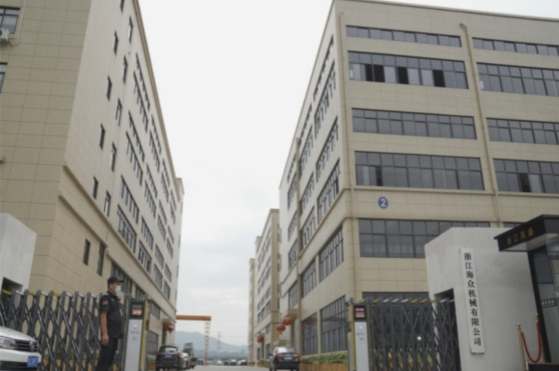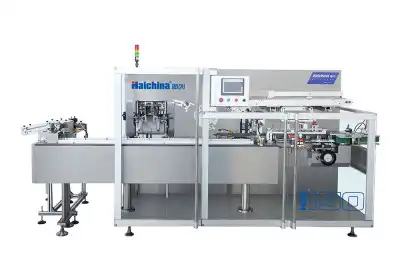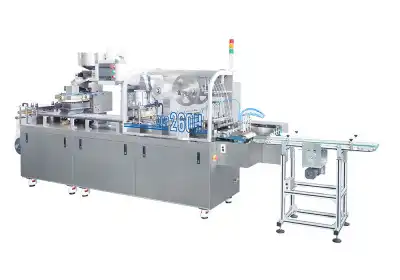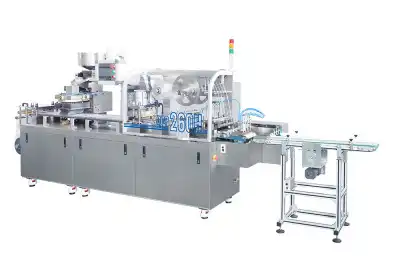The Anatomy of Blister Pack Tooling
Forming Tools: Shaping the Blister
The forming tools are the heart of blister pack tooling in a blister packaging machine. These components are responsible for shaping the plastic material into the desired cavity or pocket that will hold the product. Typically made from high-quality aluminum or steel, forming tools are precision-engineered to create consistent and accurate blister shapes. The design of these tools takes into account factors such as the product's dimensions, the required depth of the cavity, and any specific features needed for product protection or display.

Sealing Dies: Ensuring a Secure Closure
Sealing dies are another critical element of blister pack tooling in a blister packaging machine. These components are used to seal the blister to the backing material, which is often a foil or paperboard. The sealing die applies pressure and heat to create a strong bond between the blister and the backing, ensuring the product remains securely enclosed. The design of sealing dies must consider the materials being used, the required seal strength, and any easy-open features that may be needed for consumer convenience.

Cutting Tools: Achieving the Final Shape
Once the blister pack is formed and sealed in a blister packaging machine, cutting tools come into play. These components are responsible for trimming excess material and separating individual blister packs from the sheet. Cutting tools can be designed to create various shapes and sizes, from simple rectangles to more complex contoured forms. The precision of these tools is crucial for producing clean, professional-looking blister packs that are easy to handle and display.

The Role of Blister Pack Tooling in Packaging Efficiency
Customization and Flexibility
One of the key advantages of blister pack tooling is its ability to be customized for specific products and packaging requirements. Manufacturers can design tooling to create blisters of various shapes, sizes, and depths, accommodating a wide range of products from small pills to larger consumer goods. This flexibility allows companies to create unique packaging solutions that not only protect their products but also enhance their visual appeal on store shelves.
Production Speed and Consistency
Well-designed blister pack tooling significantly contributes to the efficiency of packaging operations. When integrated into a high-quality blister packaging machine, these tools enable rapid production of blister packs with consistent quality. The precision engineering of the tooling ensures that each blister is formed, sealed, and cut to exact specifications, minimizing waste and reducing the likelihood of packaging defects. This consistency is particularly crucial in industries such as pharmaceuticals, where packaging integrity is essential for product safety and regulatory compliance.
Material Optimization
Blister pack tooling in a blister packaging machine plays a vital role in optimizing material usage. By creating precisely shaped cavities that closely match the product's dimensions, these tools help minimize the amount of plastic material required for each package. This not only reduces material costs but also aligns with sustainability efforts by decreasing plastic waste. Additionally, well-designed tooling can contribute to the use of thinner gauge materials without compromising package integrity, further enhancing resource efficiency.
Advancements in Blister Pack Tooling Technology
Integration of Smart Technologies
The evolution of blister pack tooling in blister packaging machines has seen the integration of smart technologies to enhance performance and efficiency. Modern tooling systems may incorporate sensors and data collection capabilities, allowing for real-time monitoring of the packaging process. This integration enables manufacturers to detect issues promptly, adjust parameters on the fly, and maintain optimal production conditions. Smart tooling can also facilitate predictive maintenance, helping to prevent downtime and extend the lifespan of the packaging equipment.
Sustainable Materials and Designs
As sustainability becomes increasingly important in the packaging industry, blister pack tooling in blister packaging machines is adapting to accommodate eco-friendly materials. Advanced tooling designs now enable the use of biodegradable plastics, recycled materials, and innovative composite structures. These developments allow manufacturers to create blister packs that meet environmental standards without sacrificing product protection or visual appeal. Tooling engineers are also focusing on designs that facilitate easy separation of materials for recycling, contributing to the circular economy.
Enhanced Automation and Robotics
The latest advancements in blister pack tooling include improved compatibility with automated systems and robotics. Modern tooling is designed to work seamlessly with high-speed packaging lines, featuring quick-change mechanisms for rapid product changeovers. Robotic systems can now interact more effectively with blister pack tooling, enabling more precise handling of products and materials. This enhanced automation not only increases production efficiency but also improves worker safety by reducing the need for manual intervention in potentially hazardous areas of the packaging process.
Conclusion
Blister pack tooling is a fundamental component in the world of packaging, playing a crucial role in the efficiency, quality, and versatility of blister packaging machines. As technology continues to advance, these tools are becoming increasingly sophisticated, offering improved customization, sustainability, and integration with smart manufacturing systems. For companies seeking to optimize their packaging processes, investing in high-quality blister pack tooling is essential for achieving superior product protection, visual appeal, and operational efficiency in today's competitive market.
Contact Us
For more information about our blister packaging machines and custom tooling solutions, please contact us at [email protected]. Our team of experts at Zhejiang Haizhong Machinery Co., Ltd. is ready to help you find the perfect packaging solution for your products.




